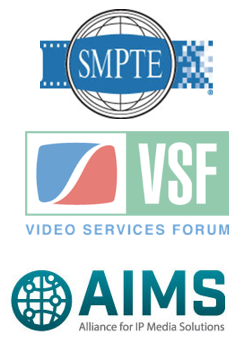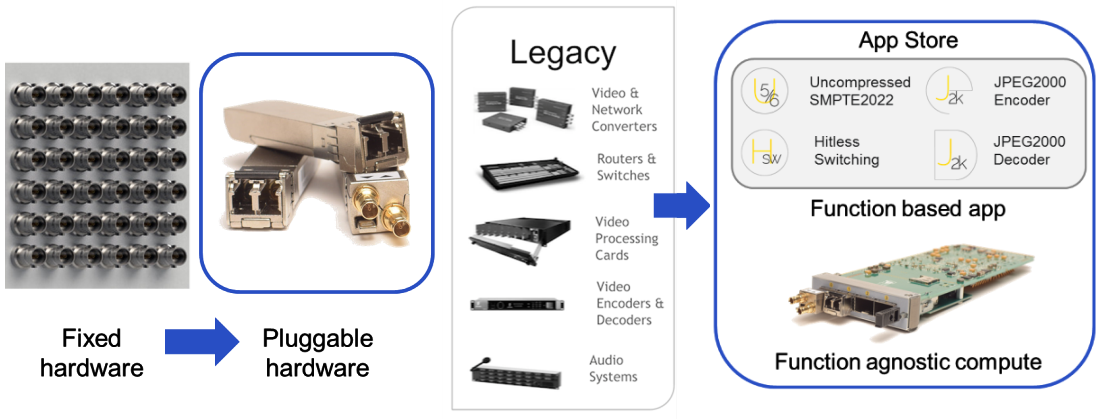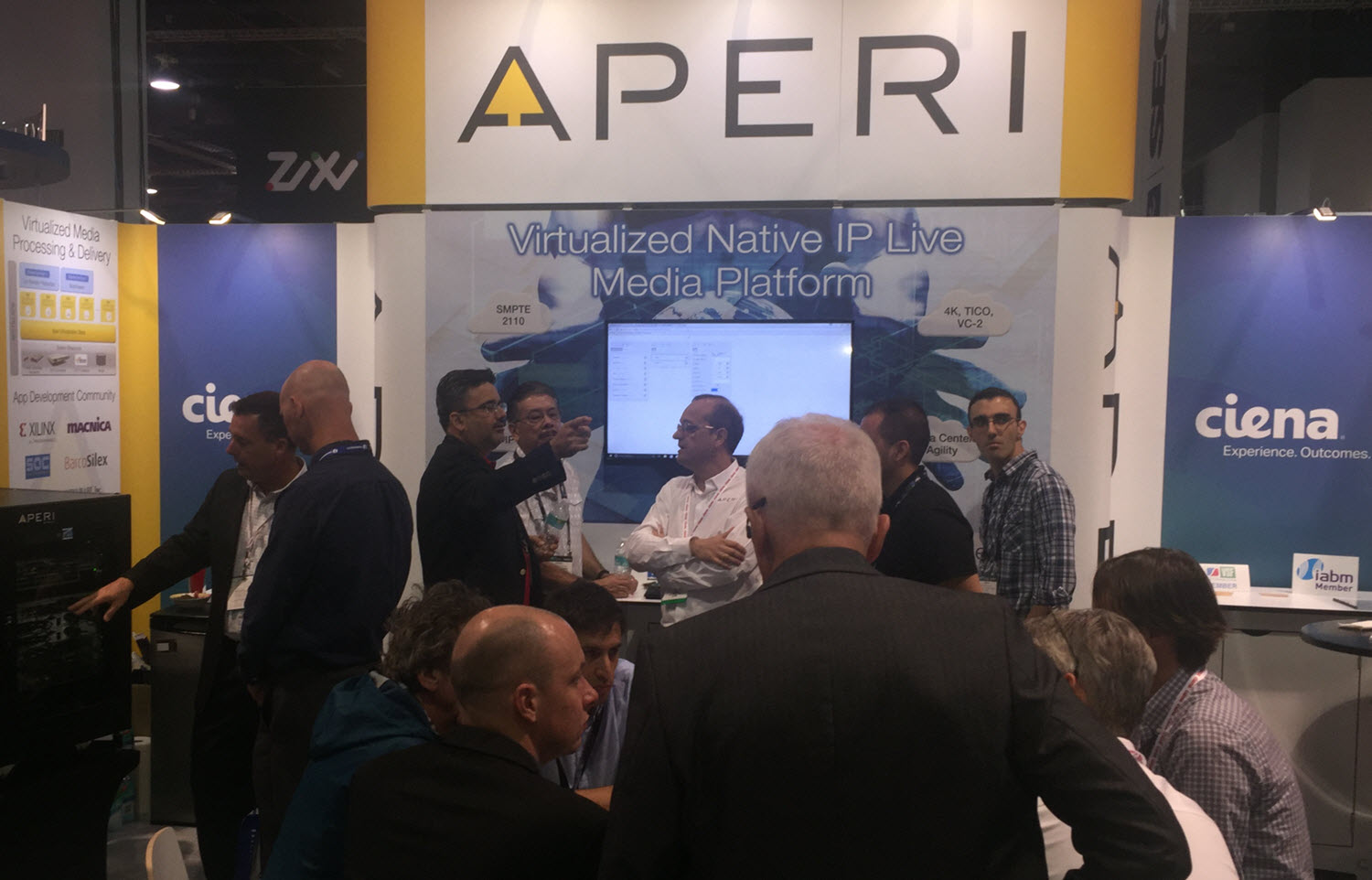3 Key Video Transport Innovation Trends We Heard at the #NABShow
The broadcast and media market is currently worth just over $50 billion a year, according to the latest research from IABM DC. Today’s Media & Entertainment (M&E) industry is evolving at a rapid pace, requiring higher capacity transport and switching to meet the bandwidth requirements of ever-increasing media/video resolutions, and to ensure a high-quality customer viewing experience. To compete effectively, the industry also seeks economies of scale when moving video content between venues, data centers, and production facilities, which can be realized by transitioning from proprietary technologies to standards-based offers like Ethernet and IP.
At last week’s National Association of Broadcasters (NAB) Show in Las Vegas, innovation was a consistent theme. Let’s look at how network innovation can address three key M&E trends that where hot topics:
1) Evolution to IP
If you were at NAB last week you couldn’t help notice that the transition to Internet Protocol (IP) is uppermost in the minds of media companies. The move away from high-cost, specialized hardware and the convergence of media technology with cost effective, widely deployed IT technology promises to lower costs and deliver operational simplicity. As such, media organizations are strongly considering utilizing IT or so called “Commercial off-the-shelf” (COTS) technologies for many applications.
 The industry has already been moving in this direction with standards like the Society of Motion Picture Television Engineers (SMPTE) 2022 that focuses on the transmission of video over a packet/IP based network. Additionally, with the work of industry groups like the Video Services Forum (VSF) and the collaborative effort of the Alliance for IP Media Solutions (or AIMS) that “promotes the open standards that broadcast and media companies use to move from legacy SDI systems to a virtualized, IP-based future—quickly and profitably”, this move is accelerating.
The industry has already been moving in this direction with standards like the Society of Motion Picture Television Engineers (SMPTE) 2022 that focuses on the transmission of video over a packet/IP based network. Additionally, with the work of industry groups like the Video Services Forum (VSF) and the collaborative effort of the Alliance for IP Media Solutions (or AIMS) that “promotes the open standards that broadcast and media companies use to move from legacy SDI systems to a virtualized, IP-based future—quickly and profitably”, this move is accelerating.
This IP-centric approach is pushing data center technologies deeper into the video production world and we are seeing traditional contribution/broadcast studio environments transition into new contribution/broadcast datacenters.
Solutions that offer non-video specific, COTS hardware and that can continue to support traditional coaxial Serial Digital Interface (SDI) for example, enable a cost-optimized offering leveraging industry standard silicon and transceivers with an at-your-own-pace transition towards a packet network based on Ethernet and (IP).
2) Virtualized Media Functions
We have all heard that that the days of specialized hardware are numbered, but until recently this wasn’t a reality within the media industry. At NAB 2017, virtualization was more than a topic of discussion – the era of virtualized media functions is here. Today’s application specific boxes can be replaced by a single, low-cost platform for software-based appliances and applications that can be installed in minutes. The new virtualized media studio replaces fixed hardware with pluggable hardware, and collapses multiple rack units (RUs) of processing equipment with a single 1RU platform capable of high capacity switching and aggregation.

This compact platform is essentially a Software Defined Media platform that consolidates a wide range of media functions by simply downloading the desired application from an App Store – just like you install new apps to your Apple or Android device. Deploying a virtualized media functions approach eliminates truck rolls, simplifies operations and delivers a solution that can be remotely programmed on-demand leveraging the same platform.
3) Orchestration
As media networks evolve to look more and more like Data Center networks, having Software Defined Networking (SDN) enabled technologies will allow IT network planners to create applications that optimize how video is produced and distributed. Adding Software defined control is a key building block to a unified media production network that aligns with file-based data center like applications.
Multi-layer and multi-vendor orchestration through open APIs simplifies and automates the consumption of the network. The result is a virtual network framework that allows resources to be provisioned automatically in response to either predicted (via analytics) or unpredicted demand in order to continuously (without interruption) meet application-specific Quality of Experience (QoE) requirements.

Ciena and Aperi joined forces at this year’s NAB show to demonstrate how an open standards-based approach for media transport, coupled with high-capacity switching and transport, enables a solution to meet all next-generation media network requirements. The power of combining Aperi’s Media Function Virtualization (MFV) ecosystem with Ciena’s reliable multi-terabit switching capacity and transport enables a highly programmable end-to-end media transport solution over any distance, that addresses the full range of media applications through various downloadable apps, as required for today’s high-scale M&E applications.

Top blog image courtesy of NAB Show





